Part 5 How We Did It: Park Slope Passive House Series - Insulation and Air Barrier
2021.10.07
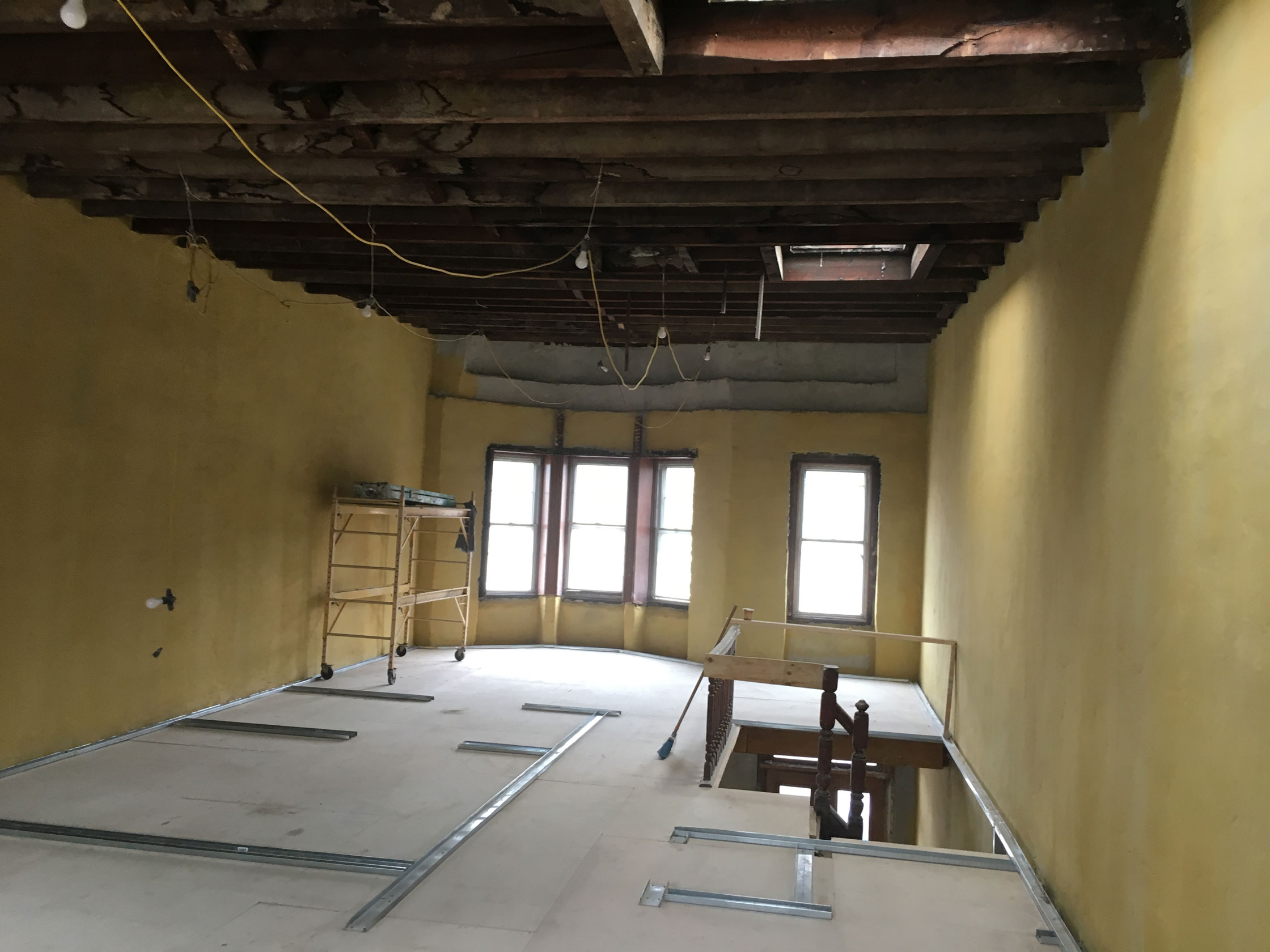
We’re looking back at one of our completed Passive House projects, a Landmarked multi-family townhouse in Park Slope, Brooklyn. Our last post looked at initial demolition and structural work that allowed us to free up living space for the client. Up next is creating a well-insulated, airtight enclosure.
Achieving Passive House energy performance requires that the entire house be wrapped in a continuous insulation layer. In addition, an air barrier ensures that the precious heat (or air conditioning) does not simply leak out of gaps and seams into the atmosphere.
In an historic structure, it is most typical to insulate from the inside, which fully preserves the classic masonry look of the building. Since this project is a row house, it is really only exposed to the elements on the front and rear facades, which allows us to use less insulation on the party walls.
The masonry itself was first repointed and covered in a monolithic layers of plaster stucco and Sto Emerald Coat. This fills any gaps or cracks and serves as the primary air barrier.
To add the increased insulation required to meet Passive House standards, we wrapped the framing studs with Pro Clima Intello Plus, which is a vapor-permeable airtight membrane product. The Intello is stapled onto the studs, and the seams are taped before the insulation is blown into the cavities.
We chose dense-pack cellulose insulation, which is a non-toxic wood-based product that, when blown into frames, can fit tightly into enclosed areas and around obstructions such as wires and ducts. The Intello holds the cellulose in place, and also allows humidity to migrate out of the cavity during the warm summer months.
A second layer of framing strips is applied over the Intello, creating room for a “service wall” where electrical conduit can run without penetrating the air barrier. Standard gypsum wall board is applied as the final finish layer.
The framing for most walls remains open for many weeks while the building’s infrastructural systems, including electric, plumbing, ventilation, heating and cooling are installed.
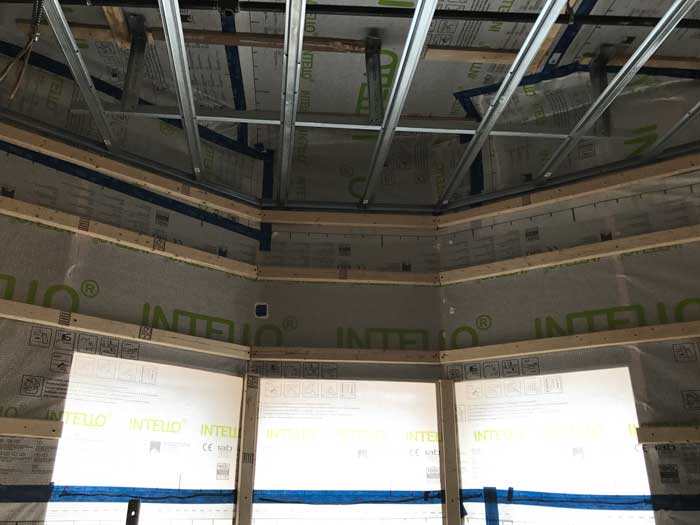
There’s No Basement At The Alamo
In this project, the cellar will not be occupied and is treated as “outside” of the living space. The underside of the ground floor is covered with taped Polyiso rigid board, ensuring a continuous insulation layer around all sides (walls, roof and floor) of the living space.
Finally, any penetrations of water, sewer and new sprinkler pipes from the cellar through the floor are properly gasketed and sealed.

Previously: We examined the demolition phase and new structural work, a precursor to getting this building airtight and ready for Passive House standards.
Up Next: Following installation of the insulation and air barriers, we inspect the design and layout of the MEP (mechanical, electrical, plumbing) systems for Passive House performance and client comfort.
How We Did It: Park Slope Passive House Series
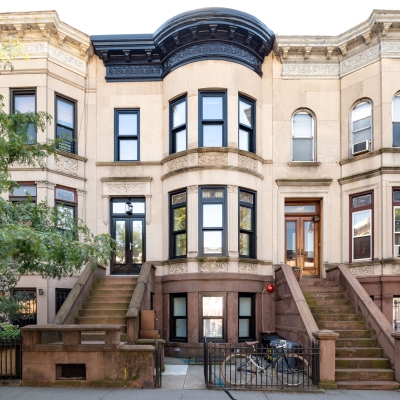 Part 1
Introduction
2021.08.16
Part 1
Introduction
2021.08.16
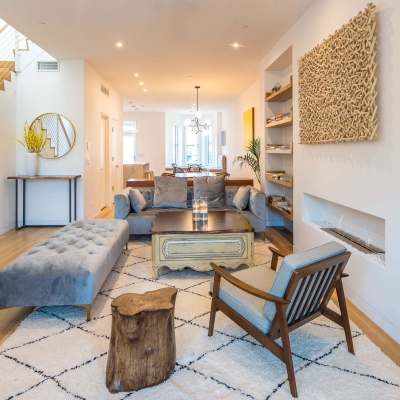 Part 2
Architectural Design and Layout
2021.08.16
Part 2
Architectural Design and Layout
2021.08.16
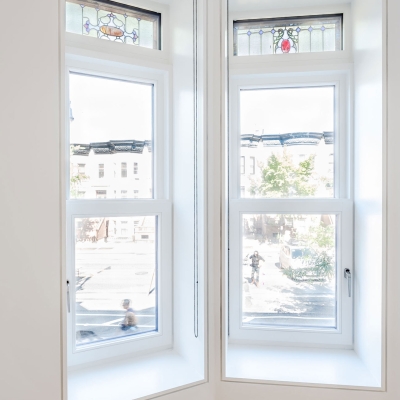 Part 3
Passive House Design
2021.08.16
Part 3
Passive House Design
2021.08.16
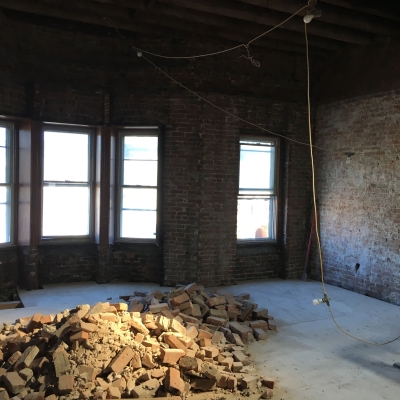 Part 4
Demolition and Framing
2021.10.06
Part 4
Demolition and Framing
2021.10.06
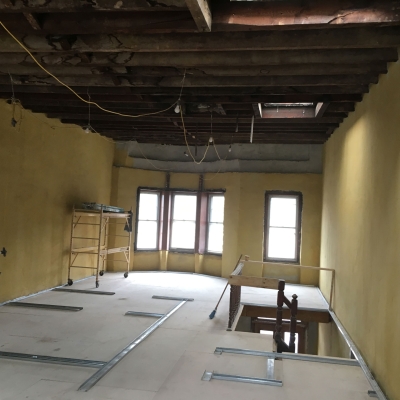 Part 5
Insulation and Air Barrier
2021.10.07
Part 5
Insulation and Air Barrier
2021.10.07
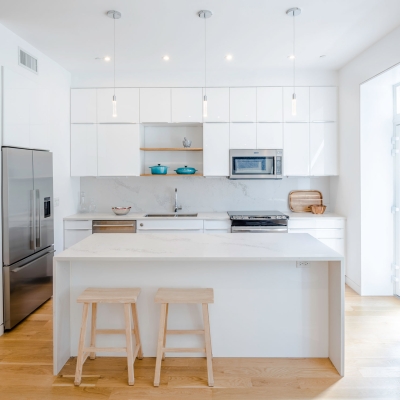 Part 6
Heating, Cooling & Ventilation
2021.10.11
Part 6
Heating, Cooling & Ventilation
2021.10.11
 Part 7
Final Testing and Handoff
2022.07.12
Part 7
Final Testing and Handoff
2022.07.12
 Part 8
Interior Finishes
2022.07.13
Part 8
Interior Finishes
2022.07.13
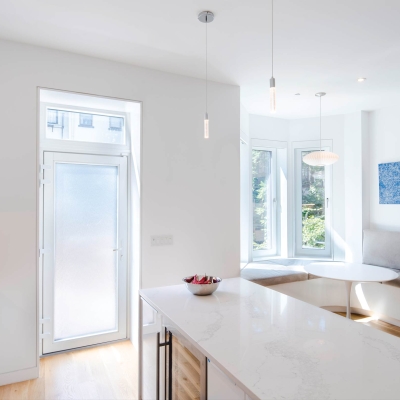 Part 9
Preliminary Blower Door Testing
2022.07.14
Part 9
Preliminary Blower Door Testing
2022.07.14



